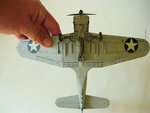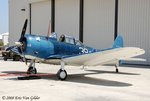Njaco
The Pop-Tart Whisperer
I didn't know where to put a thread like this so here it is.
The next Group Build in the Modelling Section is on the PTO. I've decided to finish a Dauntless that my father semi started. But I have no clue about the plane, who flew or camo schemes. I think I want to portray a Dauntless that flew from the US carriers at Midway but I don't have any info. I think Lucky is doing Swede's Dauntless and this might help him also. So.....
What Dauntless units were involved at Midway?
What were their markings / camo?
What type/mark of Dauntless was at Midway? SBD-1, -2, -3, -4, -5?
Is there much external difference between a SBD-1 and a SBD-3? Or any of the others?
Thanks!
The next Group Build in the Modelling Section is on the PTO. I've decided to finish a Dauntless that my father semi started. But I have no clue about the plane, who flew or camo schemes. I think I want to portray a Dauntless that flew from the US carriers at Midway but I don't have any info. I think Lucky is doing Swede's Dauntless and this might help him also. So.....
What Dauntless units were involved at Midway?
What were their markings / camo?
What type/mark of Dauntless was at Midway? SBD-1, -2, -3, -4, -5?
Is there much external difference between a SBD-1 and a SBD-3? Or any of the others?
Thanks!











